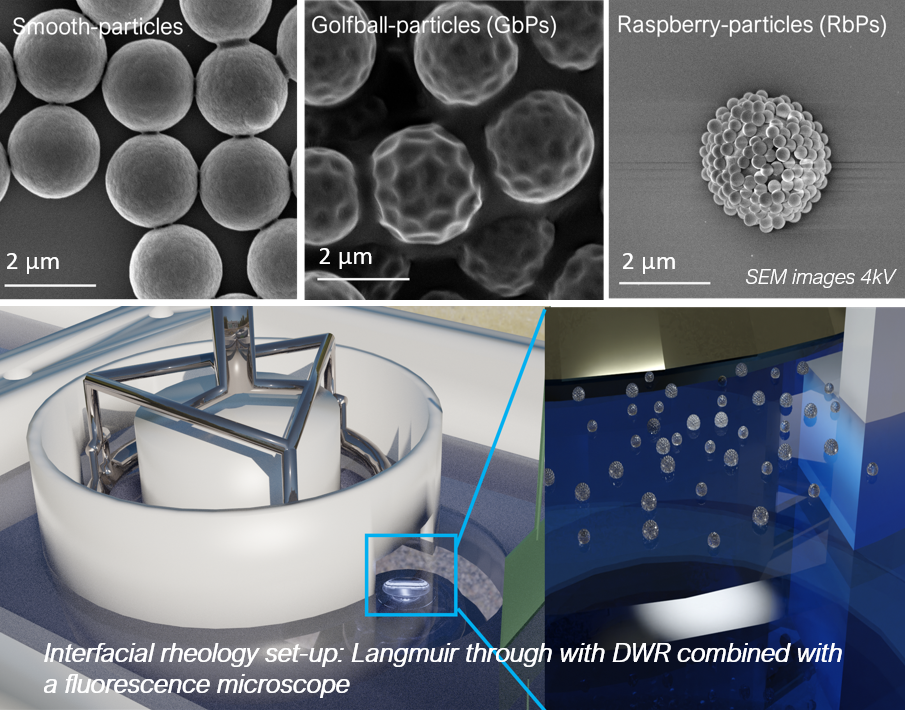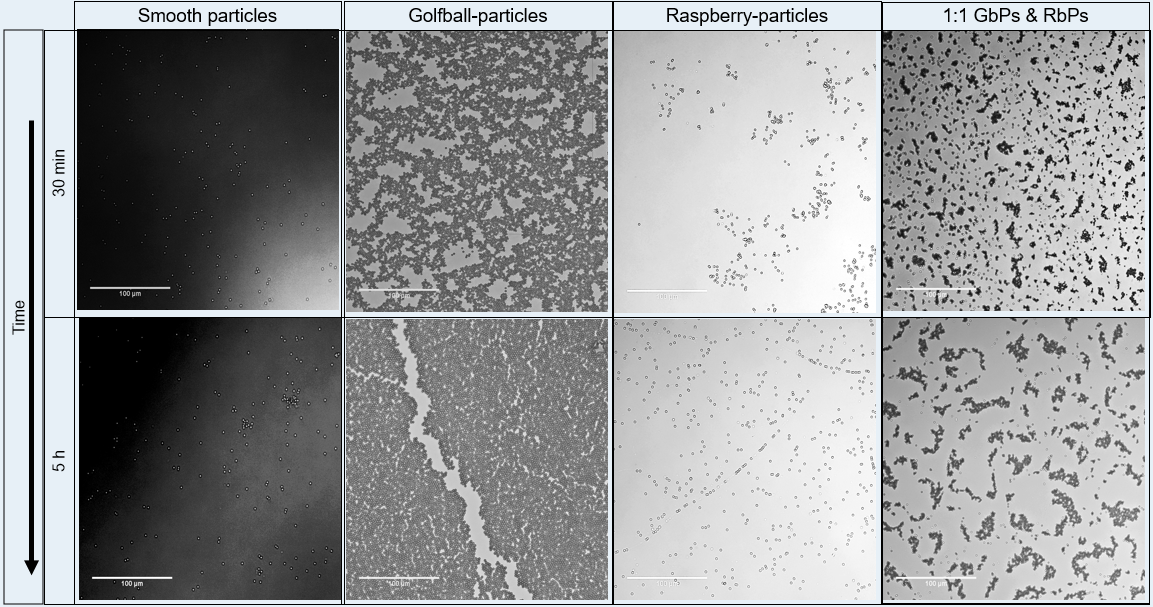Interfacial rheology of particles with matching convex and concave asperities
Surface roughness of colloids highly influences their self-assembly behaviour, therefore dictating the mechanical properties in such systems. Here, we report the macroscopic interfacial rheology of microparticle networks in different ratios of topologically matching convex and concave surface asperities measured with a double wall ring (DWR) interfacial rheometer. In this set-up, a Langmuir through with an adapted DWR attached to a stress-controlled rheometer was used to probe the mechanical properties. The surface coverage and local events are investigated using a light microscope during the experiments.

Fig. 1:SEM images 4kV, 30’000 x magnification, scale bar corresponds to 2 µm, below interfacial rheology set-up: Langmuir through with DWR combined with a fluorescence microscope
The organo-silica particles with concave features, also known as golf ball-like particles (GBPs) were synthesized following an approach from Liang et al. [1] The particles with a convex featured were synthesized following a novel one-pot synthesis, based on a co-condensation reaction of two organo-silane precursors. These particles consist of smaller corona particles condensed to a larger core particle and can be referred to as raspberry-like particles (RBPs) [2]. These particles were spread at a water-air interface in different ratios and compressed to different surface coverage to measure their interfacial mechanical properties. Preliminary results show a highly elastic and strong interface in the high frequency regime due to interlocking between particles compared to smooth particles with similiar surface chemistry.
Fig. 2: Spreading of Particles at an Air-Water interface, 40 x magnification

[2] Zanini, M., Marschelke, C., Anachkov, S. et al., Nat Commun ,2017,8, 15701.